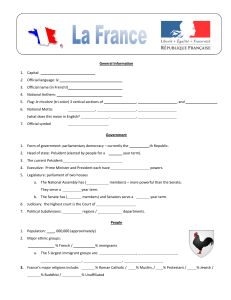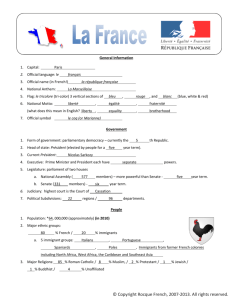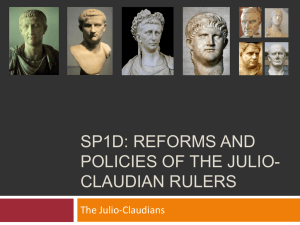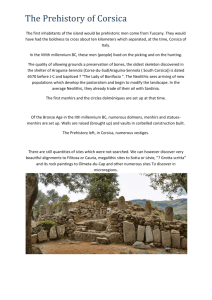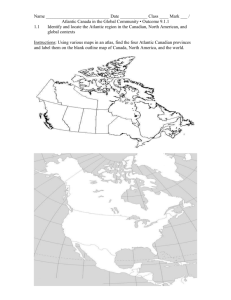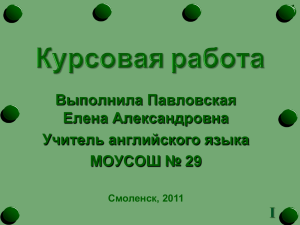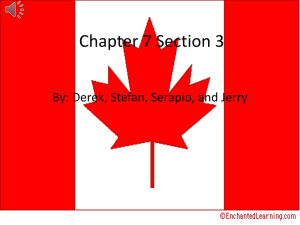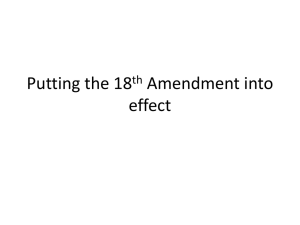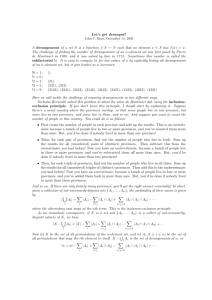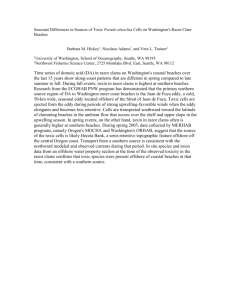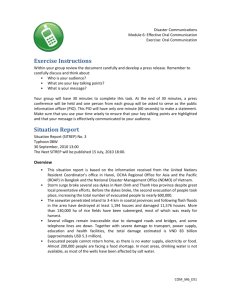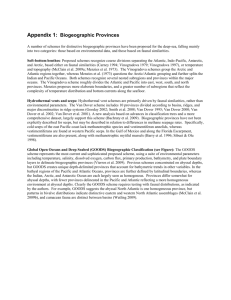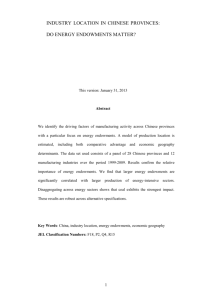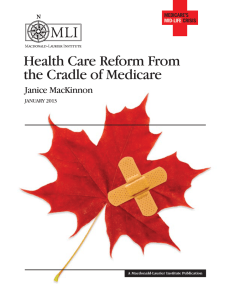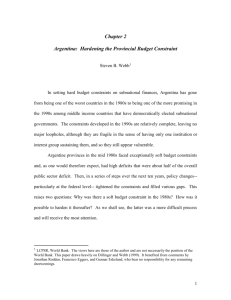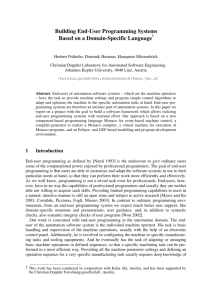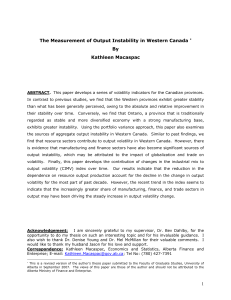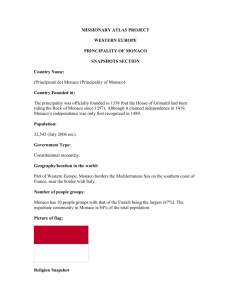Culture Unit 6B: La France et ses voisins, pp
advertisement
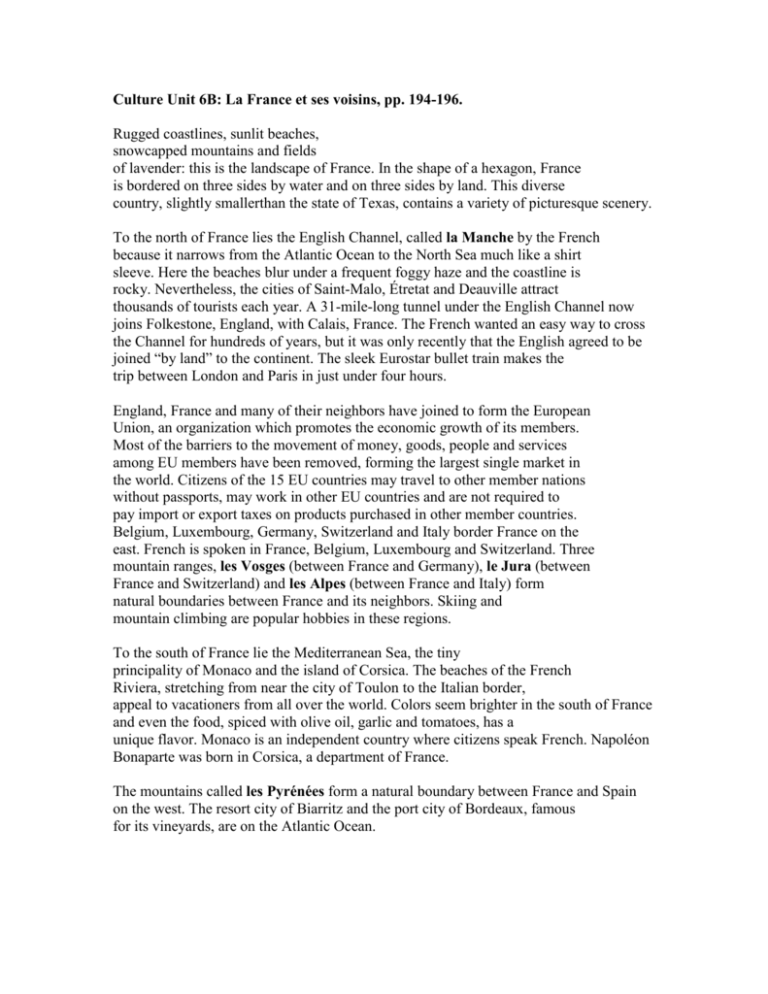
Culture Unit 6B: La France et ses voisins, pp. 194-196. Rugged coastlines, sunlit beaches, snowcapped mountains and fields of lavender: this is the landscape of France. In the shape of a hexagon, France is bordered on three sides by water and on three sides by land. This diverse country, slightly smallerthan the state of Texas, contains a variety of picturesque scenery. To the north of France lies the English Channel, called la Manche by the French because it narrows from the Atlantic Ocean to the North Sea much like a shirt sleeve. Here the beaches blur under a frequent foggy haze and the coastline is rocky. Nevertheless, the cities of Saint-Malo, Étretat and Deauville attract thousands of tourists each year. A 31-mile-long tunnel under the English Channel now joins Folkestone, England, with Calais, France. The French wanted an easy way to cross the Channel for hundreds of years, but it was only recently that the English agreed to be joined “by land” to the continent. The sleek Eurostar bullet train makes the trip between London and Paris in just under four hours. England, France and many of their neighbors have joined to form the European Union, an organization which promotes the economic growth of its members. Most of the barriers to the movement of money, goods, people and services among EU members have been removed, forming the largest single market in the world. Citizens of the 15 EU countries may travel to other member nations without passports, may work in other EU countries and are not required to pay import or export taxes on products purchased in other member countries. Belgium, Luxembourg, Germany, Switzerland and Italy border France on the east. French is spoken in France, Belgium, Luxembourg and Switzerland. Three mountain ranges, les Vosges (between France and Germany), le Jura (between France and Switzerland) and les Alpes (between France and Italy) form natural boundaries between France and its neighbors. Skiing and mountain climbing are popular hobbies in these regions. To the south of France lie the Mediterranean Sea, the tiny principality of Monaco and the island of Corsica. The beaches of the French Riviera, stretching from near the city of Toulon to the Italian border, appeal to vacationers from all over the world. Colors seem brighter in the south of France and even the food, spiced with olive oil, garlic and tomatoes, has a unique flavor. Monaco is an independent country where citizens speak French. Napoléon Bonaparte was born in Corsica, a department of France. The mountains called les Pyrénées form a natural boundary between France and Spain on the west. The resort city of Biarritz and the port city of Bordeaux, famous for its vineyards, are on the Atlantic Ocean. There are several important rivers in France. La Seine divides the capital city of Paris in half before it meanders north to the city of Le Havre on the English Channel. Along the tranquil banks of la Loire, the longest river in France, kings had beautiful châteaux built during the Renaissance. Le Rhône empties into the Mediterranean Sea near the city of Marseille, the largest French port. Two other important rivers in France are la Garonne, near Bordeaux, and le Rhin, which forms a border between France and Germany. The Gulf Stream from the Atlantic Ocean keeps the climate of France quite mild throughout the year. However, le mistral, a powerful wind, blows dry air through the mountains of le Massif Central in central France during the spring and summer. France used to be divided into provinces; people still maintain pride in the food, wine, architecture, art, dialects and traditional costumes associated with these provinces. Several of the more wellknown French provinces are Brittany and Normandy to the north, Provence to the south, Aquitaine to the west, and Alsace and Lorraine to the east. Alsace and Lorraine have belonged to either Germany or France at various times throughout history; many of the people in these provinces speak both German and French, as well as local dialects. Today France is divided into smaller départements for governmental purposes. You can tell what department people are from by the last two numbers of their license plates and also by the first two numbers of their zip codes. A combination of the traditional and the contemporary, beautiful countryside and bustling cities, France, the largest country in western Europe, is rightly called la Belle France.
